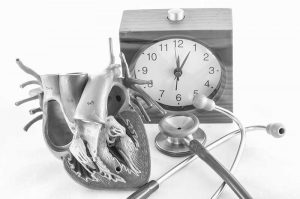How do our bodies keep time? According to new research, our individual organs and central clocks may work together through a process known as coupled oscillation.
We often talk about the circadian rhythm as though it were one single timepiece. However, our internal clocks are much more complicated than this. In fact, every organ system and even every cell in our bodies have their own internal timing with different tasks to be performed according to a different schedule. New research in chronobiology suggests that a phenomenon known as coupled oscillation may be key to understanding how different clocks in our body coordinate activities and timing with each other.
Coordinating Different Cues
A new experiment on fruit flies has shed light on how central and peripheral (non-central) clocks can work together to tightly regulate a variety of biological processes. Fruit fly eggs always hatch in the morning, a process controlled by both the prothoracic gland and central clock neurons in the flies’ brains. The prothoracic gland is similar to the adrenal gland of the human body in that it produces corticosteroid hormones that are involved in the timing of a variety of activities. In this case, the prothoracic gland makes a hormone called ecdysone, which cues the eggs to begin the hatching process.
We know that both of these systems are necessary for firefly eggs to hatch because the hatching will become uncoordinated and occur at random times if either is cut off in a scientific laboratory. Researchers believe that this coordinated action is facilitated by another group of neurons called PTTH neurons. The central and peripheral clocks can communicate and ultimately work together to get the desired effect.
What is a Coupled Oscillator?

In biology, this system is used to control brain rhythms and a variety of different activities. New research in chronobiology suggests that it also may be important in determining a variety of other patterns. Our bodies often need to have activities influenced or controlled by more than one mechanism, and this is where coupled oscillation becomes so useful. According to researcher Christian Wegener,
“This is the first comprehensive experimental description of a pathway that links circadian clocks and it shows that the coupled-oscillator model is actually true in certain cases.”
In other words, this is the first time that coupled oscillators have been connected to chronobiology and our internal clocks.
The Rhythms of Life
Understanding more about how different internal clocks align could potentially improve health in a variety of ways. For example, medications could be timed to be more effective with fewer side effects or people could finally find a cause—and thus a cure—for their sleep disorder. Our clocks are so integral to life that there is an almost endless potential in learning more about them.
Life operates in a distinctive rhythm, both in the natural world and in biology. The sun rises and sets every day; the moon moves through phases in 28-day spurts. Life synchronizes both with the clocks of the external world as well as our own internal drives and demands. Coupled oscillators present one possible way that all of these cycles can coordinate to keep our bodies on schedule and on track.







